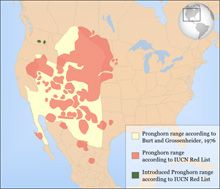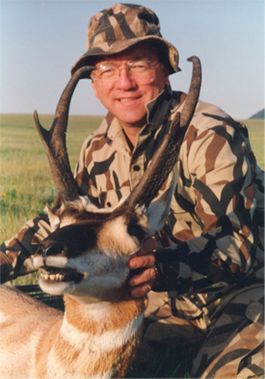10. & 11. Pronghorn antelope--Wyoming (left) New Mexico (right)

In the 1920’s we only had 20,000 pronghorns, but today, thanks to hunting laws and
wildlife management paid for by hunters, there are 35 million antelope now living
in the western United States. Pronghorns live in open prairie and desert country.
Both the male and females have true bony horns, although those of the female are
small. The horns are covered with sheaths of fused hairs, which are shed annually.
The black horn that you see is the sheath. Pronghorns are known for their speed and
have been clocked up to 50 miles per hour. The hair of the pronghorn is hollow, allowing
it to be comfortable in the sun at over 100 degrees, and warm in the cold western
winters.

Left buck from Wyoming taken in 1972, right buck (left photo) from New Mexico taken
in 1992. When comparing these record-book bucks to the huge Alberta pronghorn, the
scoring difference is mass. When scoring antelope, there are five mass measurements
on each horn and one length measurement. When you see lots of “black” at the base
of the horns, that’s a big pronghorn. The New Mexico antelope has long horns, but
they are not heavy, compared to the Alberta pronghorn in the small conference room.
The Wyoming buck barely made the record book. Just not a big antelope.